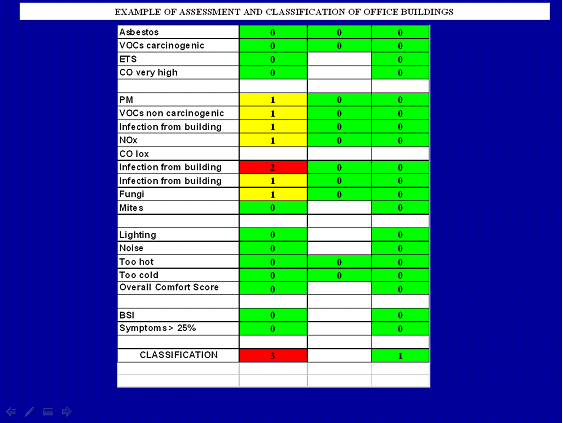 |
| Home |
HOPE: Health Optimisation Protocol for Energy-efficient Buildings |
|||||||||
|
|||||||||
| Results | |
| Introduction Performance Criteria Multidisciplinary field study | |
Protocol for building Evaluation General The overall protocol to assess the performance of the building includes three phases:
as shown in the following scheme.
In the first phase (Data collection) health and comfort performance of buildings is evaluated in two ways: (1) by surveying the occupants using a s elf-administered questionnaire; (2) and by assessing the indoor environmental conditions through a number of environmental parameters (e.g., biological, VOCs, and particulate) . Energy performance is evaluated assessing (1) technological and constructive characteristics and (2) energy consumption data of buildings. In the second phase (Detailed investigation) health and comfort are evaluated by measuring a set of environmental parameters and energy performance is evaluated by a detailed analysis of energy efficiency (if necessary). In the third phase ( Health and energy efficiency building classification), starting from performance criteria, three categories have been developed to classify buildings, both from health and energy efficiency point of view. Phase 1 - Data collection
Two tools have been developed to collect data necessary to the assessment the buildings:
Building assessment HealthThe Health and comfort hazards are evaluated, with data from checklists and questionnaires, using two different ways of assessment:
Energy Phase 2 - detailed investigation
In order to validate and confirm the preliminary assessment performed by checklist, questionnaire and related evaluation tools, a set of measurements has to be performed. Since it is not convenient for several reasons (technical, economical) to perform measurements for all hazard considered in the HOPE project, a selection of measurements is needed. The proposed approach is as follows:
For each hazard, a criterion to plan environmental measurements has been developed Phase 3 - building classification
The integration of preliminary assessment (from data collected by checklist and questionnaire) and environmental measurements performed, will lead to the final assessment of the building. Final classification is based on same criteria of preliminary classification. An example for an office building is shown in the following table.
In this example preliminary health classification is category 3 (unhealthy building), but after the detailed investigation changes to category 1 (healthy building). |

